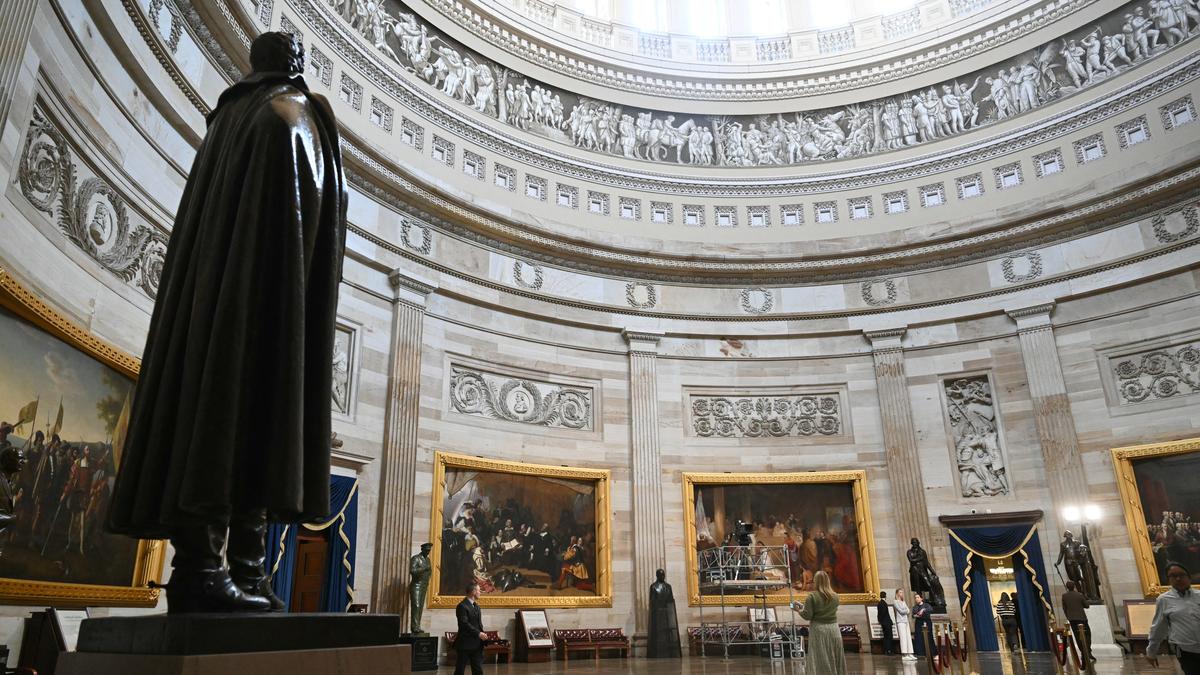President-elect Donald Trump's 2025 Inauguration: A Cold Weather Twist
Get ready for a presidential inauguration unlike any other! With an unprecedented Arctic blast set to hit Washington D.C., President-elect Donald Trump is considering a historic shift in location for his swearing-in ceremony. Instead of the traditional outdoor ceremony, the event might move indoors to the Capitol Rotunda, shielding attendees from the dangerously frigid temperatures predicted. This unexpected change adds an intriguing layer to an already monumental event, and has everyone wondering – what will this unusual inauguration look like?
The Arctic Blast
Forget balmy January weather; we're talking a serious deep freeze. The National Weather Service forecasts an inauguration day windchill that could plunge temperatures to record lows. This isn't your average winter chill; we're talking serious, potentially dangerous cold that could threaten the health and safety of the hundreds of thousands of people expected to attend the event. This unprecedented cold snap has forced the inauguration planning committee into unprecedented action. Images of bundled-up attendees are swirling in the press, and the potential disruption has left many speculating about how this will change the tone and flow of the inauguration. The last time such frigid conditions threatened an inauguration was in 1985, prompting the move of President Reagan's second inauguration indoors. This is shaping up to be even colder than that.
Impact on Attendance
The severe weather is expected to severely impact attendance at the inauguration. With windchills expected to reach dangerous levels, the safety concerns outweigh the spectacle. This is not just about discomfort, but about ensuring the safety and well-being of the hundreds of thousands of people from across the country hoping to witness this important event. Thousands will likely opt to remain home. What are the health implications of attending the event and what plans will be put in place to assist those at risk in this extreme cold?
The Rotunda Alternative
Thankfully, the Capitol Rotunda is well-equipped to handle such events and will serve as the ideal backup plan. It is fully prepared to be the location of the ceremony if the outdoor options prove to be too treacherous. The Rotunda is large enough to accommodate essential personnel and, ideally, many of the guests present at other inaugurations, keeping them safe, while still managing to host an appropriately grandiose event. This will require extensive logistics to move what has historically been an outdoor event, to the confined confines of the Rotunda, but such precautions are certainly not unwarranted given the circumstances. How are they managing such logistics? Where do they move all of the associated event structures and what impact does this change have on associated plans? What impact will the shift indoors have on the celebratory mood typically seen at outdoor events?
Changes to the Event Plan
This weather emergency is reshaping the entire inauguration experience. Thousands who planned to experience the event on the National Mall, or at another outside viewing space will be displaced, potentially losing access. The Secret Service, alongside multiple additional emergency agencies, is putting forth unprecedented logistics arrangements to coordinate with other facilities such as Washington’s Capital One arena to potentially host a more contained number of spectators indoors.
Capital One Arena as an Overflow
In a bold move to accommodate some of the displaced spectators, President-elect Trump has announced plans to use Washington’s Capital One arena as an overflow site where supporters can view the ceremony on a large screen. President Trump plans to celebrate at Capital One arena alongside spectators following his swearing-in ceremony. This strategy is a great demonstration of his commitment to his supporters. This strategy helps to make the event accessible to a number of citizens.
Logistical Challenges
Switching from an open-air event to an indoor venue involves a vast set of logistical challenges that has to be coordinated well in advance and will certainly result in several delays. The movement of attendees, security personnel, and staff will require efficient crowd management, effective communication strategies, and adherence to all relevant safety protocols to prevent a cascade of additional emergencies in the case of the weather or the increased congestion at alternative venues.
Weather's Impact on Inauguration Traditions
This is a once in a lifetime disruption to one of the most iconic traditions of the United States: the Presidential Inauguration. This historical event presents unparalleled challenges that not only affect event planning and security considerations but raise wider concerns of what this signifies and its impact on our global positioning. The inauguration ceremony is a celebration of democracy that should be safe, exciting and widely inclusive; the impact that a potential crisis has, and the steps taken to accommodate a once-in-a-lifetime crisis demonstrate the American spirit. How will this affect future inauguration preparations?
Preparing for Extreme Weather
In the future, event organizers should use weather prediction modeling to their full advantage and build in extensive contingency plans, including using additional overflow locations should weather emergencies disrupt the main location. Further, ensuring that everyone, and in particular, those involved in managing the flow of visitors at multiple locations have been adequately trained in emergency preparedness protocols to ensure the safety and efficiency of the day is essential.
A Presidential Response
President-elect Trump's response shows his sensitivity toward public safety and the desire for inclusion, given the extreme circumstances. His commitment to the safety and welfare of his supporters amid such inclement weather speaks volumes of his leadership during a crisis.
Take Away Points
- President-elect Trump's inauguration is facing a potentially historic weather challenge.
- The Arctic blast could cause the ceremony to move indoors to the Capitol Rotunda.
- Alternate plans are in place to accommodate as many spectators as possible.
- The extreme cold will undoubtedly impact attendance and significantly change the usual celebratory atmosphere of this landmark occasion.




